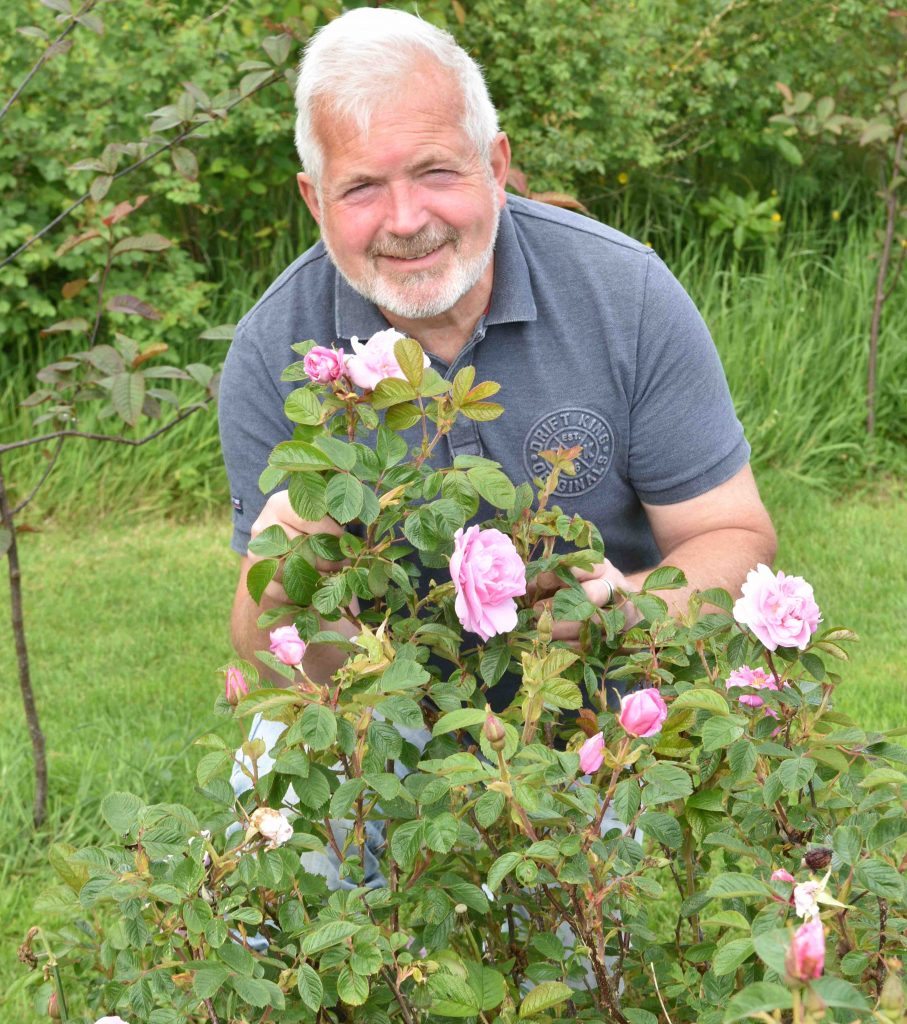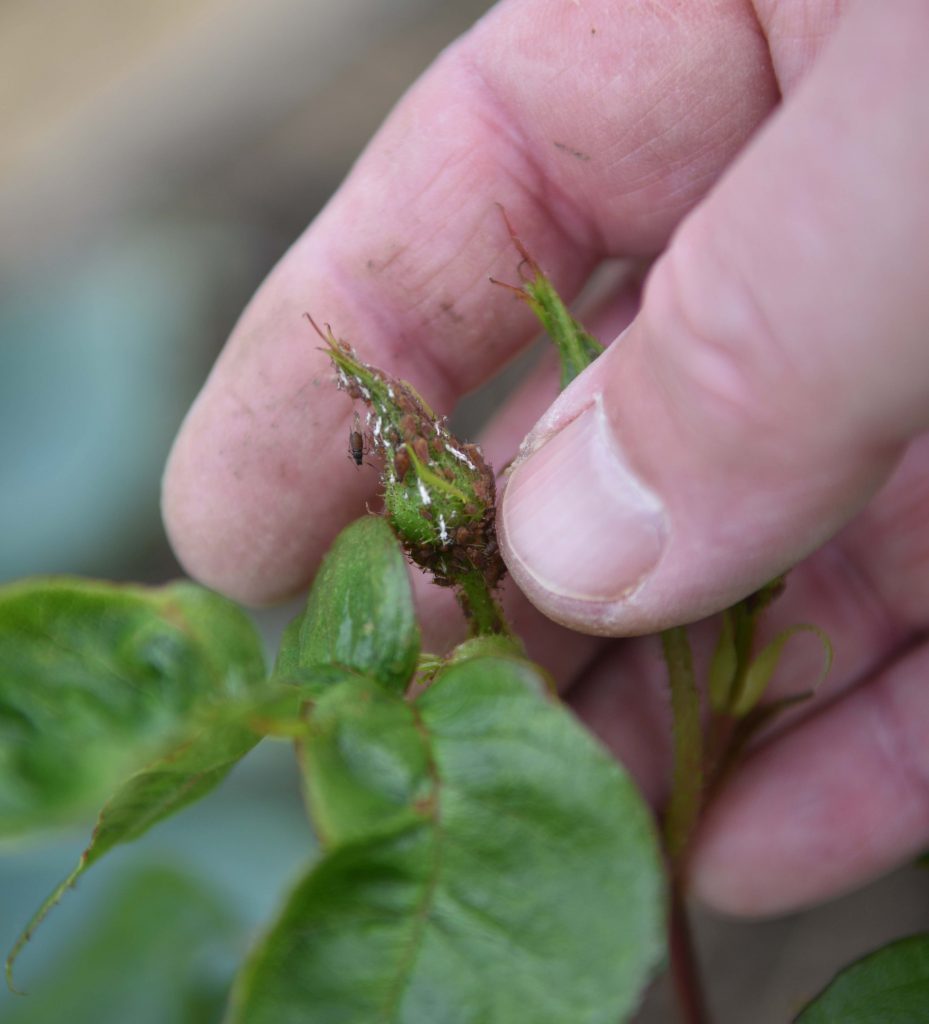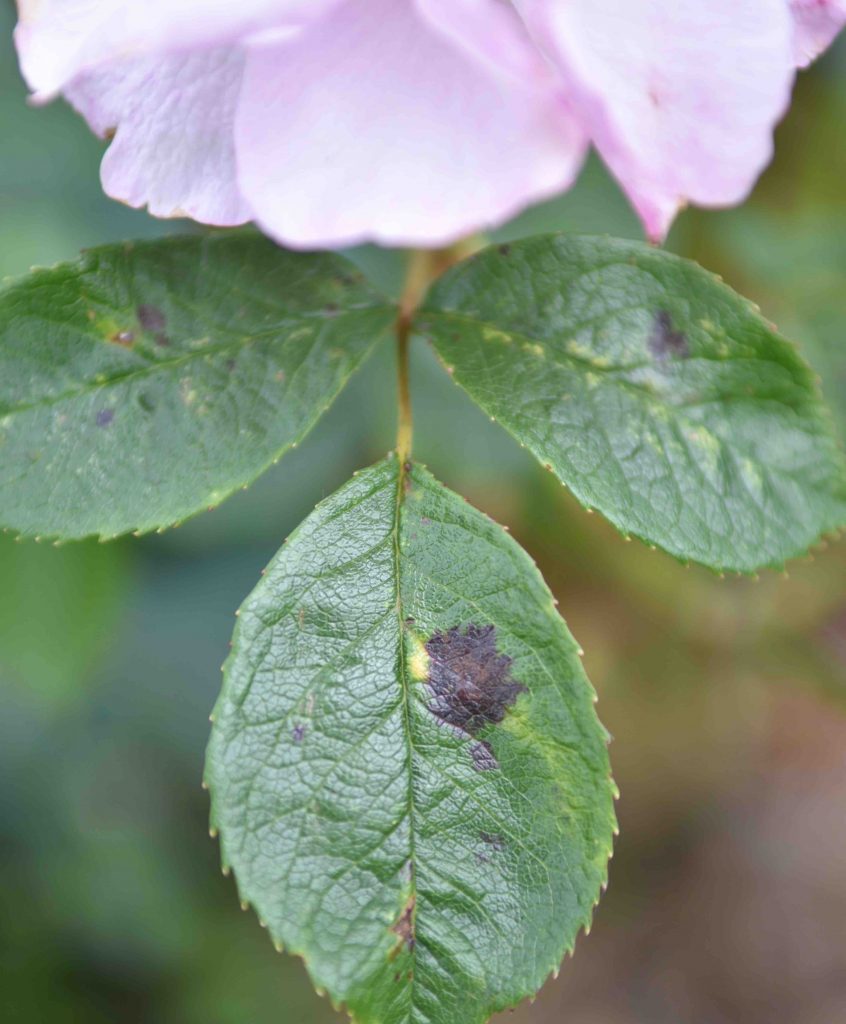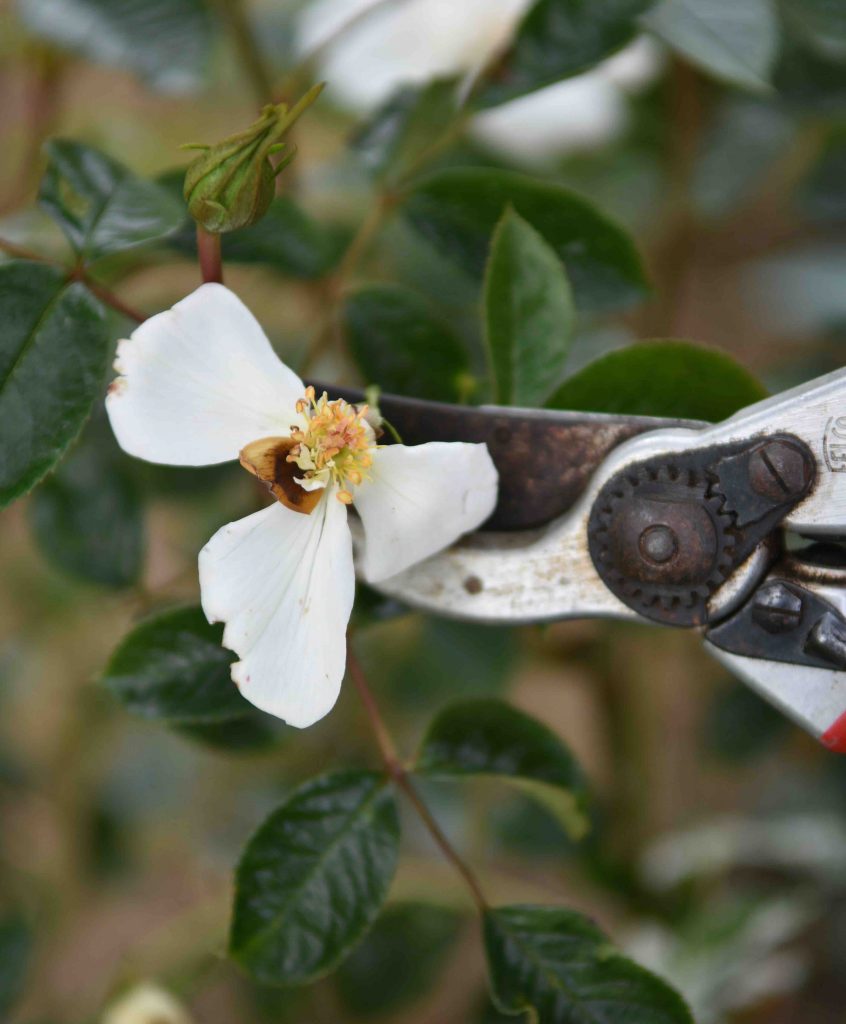
Midsummer will be with us in a few days and our gardens are packed with colour and the roses should be in full bloom. I love roses and they were among the first shrubs I planted in my new garden. I chose my roses for several reasons. Firstly, they had to be at least resistant to disease and I avoided any that were prone to disease, no matter how pretty or fragrant they were.
Fragrance came next. I am quite happy to plant a rose if it has little fragrance if it has some other features but fragrance was important. That meant that lots are Rugosa rose hybrids.
Then there was colour. I have lots of different colours but there is an imbalance towards pinks and blues. I know there are no blue roses but I like all the mauve and lilac shades and they tend to also be very fragrant. It may seem strange that I have not yet planted ‘Rhapsody in Blue’ which must be the most popular of all, but I like roses for cutting too and this one, though a great rose, drops its petals too quickly when cut. But one I had to plant was ‘Twice in a Blue Moon’ which is the loveliest, most fragrant, silvery lilac rose I know and is perfect for cutting. It is much less prone to rust than the old ‘Blue Moon’ which should really no longer be sold.
To get the best from our roses there are a few things we need to do now to make sure they keep on looking lovely all summer.

Watch for pests. I never get too worried about the common rose pests. Aphids (greenfly) can infest the shoots tips and the flower buds. If they get out of control they can distort the shoots and flowers so I tend to go round and squash them gently or rub them off. That way I won’t kill any ladybird larvae and don’t kill all the aphids so there is some food for the ladybirds. While healthy roses do get attacked by aphids and diseases, it is more common for struggling roses to succumb more severely. So feeding and watering is a good way to reduce problems.
Another common problem is leaf-cutter bees. These cut circular holes from the leaves to line their brood chambers. They rarely harm the rose bush and the bees are so industrious that I almost welcome their work and I certainly would not spray or attempt to stop them.

Blackspot is the most serious rose disease at this time of year. As soon as you see the black spots you should begin to spray with a fungicide to prevent it spreading. The fungicide will not remove the current black spots but will prevent further infection IF you spray every two weeks. Unless you have acres of roses a ready-to-use sprayer is perfect so you can just pick it up and spray the foliage. My roses are selected for health but even they can get blackspot so I am always on the look out.
If you ignore the problem the leaves will turn yellow and drop off and, by late summer, the bushes are bare of leaves with just a few flowers. Feed more often and avoid mulching with bark and your roses may be unaffected or at least will recover more quickly.

When the flowers fade, cut them off. This prevents the formation of hips and encourages reblooming. It can also prevent fungal diseases in wet weather. If the flowers are in clusters you can just cut off the first dead flowers but when the cluster has all finished you should cut off the faded cluster back to just above a full-sized leaf. This will encourage a new, strong shoot that will produce blooms.
Feeding is important and after the spring dressing of rose fertiliser you should apply a second dressing as soon as the first flush of flowers is faded. This will give the rose the nutrients it needs to grow and bloom. Make sure you water the rose too if the weather is dry.
Roses in pots need the same care but they must be fed every week as well as being watered more often to prevent them getting dry. If a rose is dry or starved it will not bloom well and will be prone to blackspot. In addition to a high potash fertiliser such as Tomato fertiliser every week I prefer to use a general fertiliser (such as MiracleGro) or a fertiliser that contains seaweed in addition every week. Roses are greedy and need that extra feeding for healthy foliage.
Weekly reminders
Net strawberries to keep birds off. When all the fruit is picked cut off the old, dying leaves and remove any runners that are being produced unless you need them to make new plants.
Harvest herbs. Lots of herbs are at their peak now and they can be picky and dried or frozen.